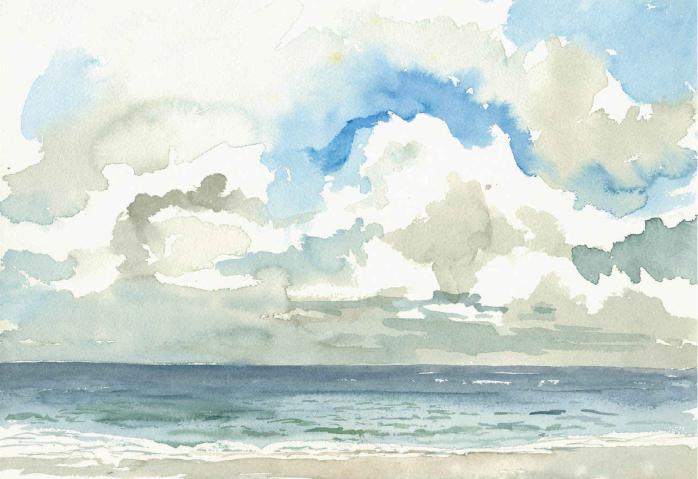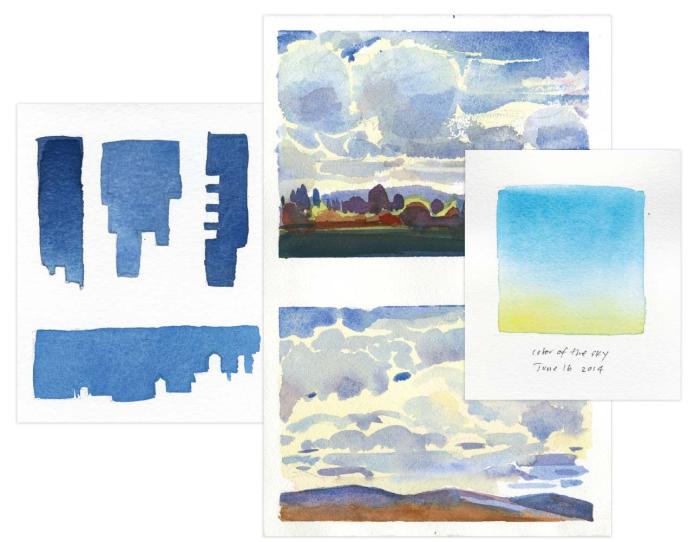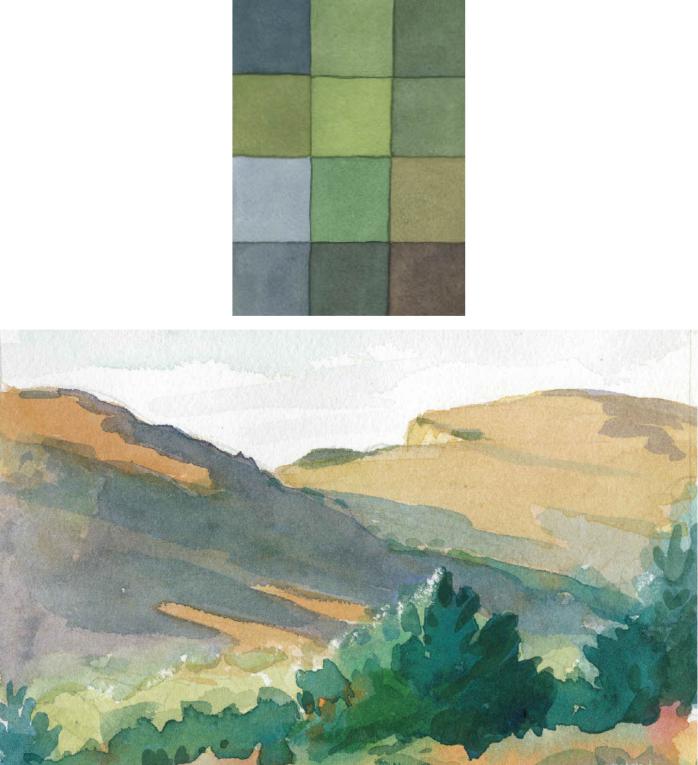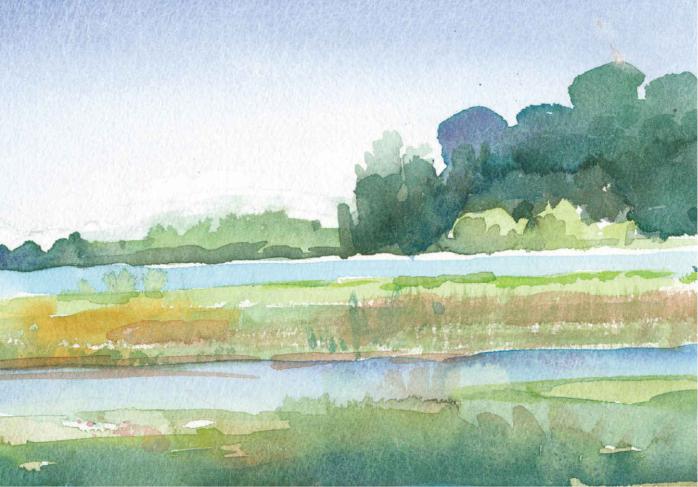
- •Acknowledgments
- •Introduction
- •Landscape
- •Ocean/Sky
- •Light
- •Wildflowers
- •Fog, Mist, and Haze
- •Forest, Lichen, and Moss
- •The Colors of Point Reyes National Seashore
- •Materials
- •Essential Equipment
- •Optional Equipment
- •Preparation
- •Paper Size & Grid
- •Pigments & Color Theory
- •Technique
- •Brush Marks
- •Painting
- •A Note on the Photographs
- •Habitat
- •Light
- •Weather
- •Seasons
- •Seasons: A Year in Color
- •Antigua, Guatemala
- •Lake Atitlán, Guatemala
- •Pátzcuaro, Mexico
- •Luxor, Egypt
- •The Dead Sea, Jordan
- •Petra, Jordan
- •Lake Issyk-Kul, Kyrgyzstan
- •Newport, Pennsylvania
- •Barney’s Joy, Massachusetts
- •Sacred Valley, Peru
- •Dominica, West Indies
- •Isle of Skye, Scotland
- •Inverness, Scotland
- •Mitchell, Oregon
- •New York, New York
- •San Francisco, California
- •Portland, Oregon
- •Big Picture
- •Detail
- •Sky Patch
- •Terrain
- •Rocks
- •Water
- •Color Walk
- •Color Memory
- •Naming Colors
- •Color Mixing
- •Primary and Secondary Colors
- •Tertiary Colors
- •Analogous Colors
- •Complementary Colors
- •Value or Tone
- •Color Temperature
- •How Many Greens are there?

SKY PATCH
Let your eyes rest in the vastness of the sky and notice how the colors change from dawn to dusk. It’s wonderful to lie on your back and look up at the sky, whether it’s a starry night or the blue of a summer day.
Painters throughout history have painted the sky. John Constable, through a lifetime of observation and practice, turned the sky into a world all its own—and came to know it for all its shapes, colors, and moods. Constable’s skies have a lot to teach us about how our landscapes are endlessly changing, always interesting, and what the practice of observing them carefully can give us.


PRACTICE
•Do a color palette of the clouds in the sky. If the clouds have shadows, paint those, too. The mist in the clouds is often pearl gray with hints of pale yellow and subtle grays, and the shadows are often purple. See if you can feel their lightness, or their heaviness if a storm is coming, and reflect that in your palette.
•Focus on the negative space and look for patches of sky.
•In a city, what colors do you see in between the buildings? In a park, what colors do you see through the branches or between the trees?
•Paint the sky at different times of day and at different times of the year: dawn, twilight, sunset, the end of a summer day, a winter sky, a spring rainstorm.
•Note on the back of your sky studies the prevailing weather conditions, direction of light, and time of day.

TERRAIN
Terrain (which can include the elevation, topography, and vegetation of a place) is one aspect of habitat. Desert, jungle, beach, mountain, city, and countryside are all types of terrain. The face of a mountain will have different colors than a boggy swamp. The dusty gray-green cactus colors in the high-altitude deserts are far different from the dark-green pine of a Maine forest at sea level.
Walking in the foothills of the Sierra Nevada Mountains, I feel a sense of the hillside topography as colors fade to blue and then purple in the distance.

One of my favorite types of terrain is salt marsh—an ever-changing zone between land and open salt water. The rhythm of the tides brings a variety of color palettes: water reflecting the sky when the tide is in, mud in primordial shades of rich browns and greens when the tide is out, and grasses in green and yellow.
PRACTICE
•Wherever you are, notice the elevation. Are you at sea level, on a mountain, in a desert or jungle? What is the terrain like? Is it flat, hilly, rocky? How does it feel under your feet? Is it gravel, cobblestone, asphalt, sand?
•Paint the colors of these features. Try to adapt your technique to the specific terrain. A watery terrain, for example, invites a wet-on-wet technique and soft edges, whereas a hillside with a pattern of trees or a streetscape might call for layering colors that have defined edges.
